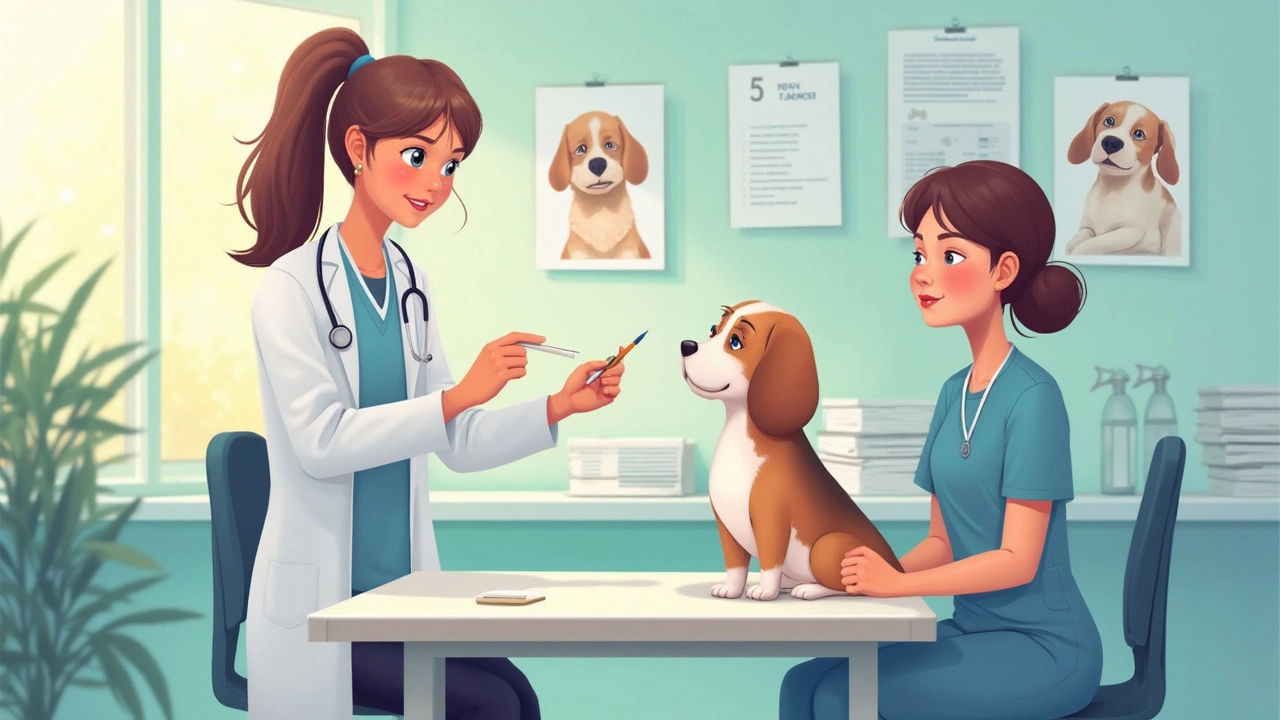Dog Vaccine Guide: What Every Owner Should Know
If you’ve ever wondered how often your dog needs a jab, you’re not alone. Vaccines protect against serious diseases, save lives, and keep your furry friend happy. In this guide we’ll break down the basics, spell out the typical schedule, and share a few handy tips to make vet visits smoother.
Why Vaccines Are a Must
Vaccines train your dog’s immune system to fight off harmful germs without the dog actually getting sick. Think of it like a rehearsal for the real thing. Without this rehearsal, a simple exposure could turn into a costly illness or even death. That’s why vets recommend core vaccines for every dog, no matter the breed or size.
Core Vaccine Schedule
Most puppies start their vaccine series at 6‑8 weeks old. The first round usually covers distemper, parvovirus, and hepatitis. Every 2‑3 weeks another dose is given until the puppy is about 16 weeks old. After the initial series, a booster at one year seals the protection, then boosters are typically needed every 1‑3 years depending on the vaccine and local regulations.
Here’s a quick snapshot:
- 6‑8 weeks: First dose (DHPP)
- 10‑12 weeks: Second dose
- 14‑16 weeks: Third dose
- 1 year: First booster
- Every 1‑3 years: Maintenance boosters
Some dogs also need non‑core vaccines like rabies, bordetella (Kennel cough), or leptospirosis. Your vet will suggest these based on your dog’s lifestyle—e.g., if you travel, board, or hunt.
One of our popular posts, “How Often Should You Vaccinate Your Pet? Essential Vaccine Guidelines for Dogs and Cats,” dives deeper into timing and reasons for each shot. It’s a good read if you want the science behind the schedule.
When you schedule a vaccine appointment, bring any previous records and a list of your dog’s daily activities. This helps the vet decide if extra shots are needed. Also, ask about possible side effects—most dogs experience mild soreness or a brief drop in energy, but serious reactions are rare.
To keep your pup comfortable, try these tricks: feed a small meal before the visit, use a calm voice, and offer a favorite toy after the shot. Positive reinforcement makes the experience less stressful and builds trust for future visits.
Finally, keep a digital or paper copy of your dog’s vaccine record. It’s required for boarding, grooming, and sometimes travel. Updating it right after each visit prevents gaps in protection.
Vaccines may feel like a hassle, but the peace of mind they bring is worth it. By following the schedule, you’re giving your dog the best chance to live a long, healthy life. Have more questions? Check out our related articles on pet health and feel free to reach out to your vet for personalized advice.

What's in the 5 in 1 Dog Vaccine: A Rundown for Pet Owners
The 5 in 1 dog vaccine is essential for protecting pets from multiple serious illnesses with just a single injection. Understanding what this vaccine covers, its benefits, and how it works can help pet owners make informed decisions about their dog's health. We delve into the specifics of these five critical components, offering a clear and practical guide for ensuring your furry friend stays safe and healthy.
View more